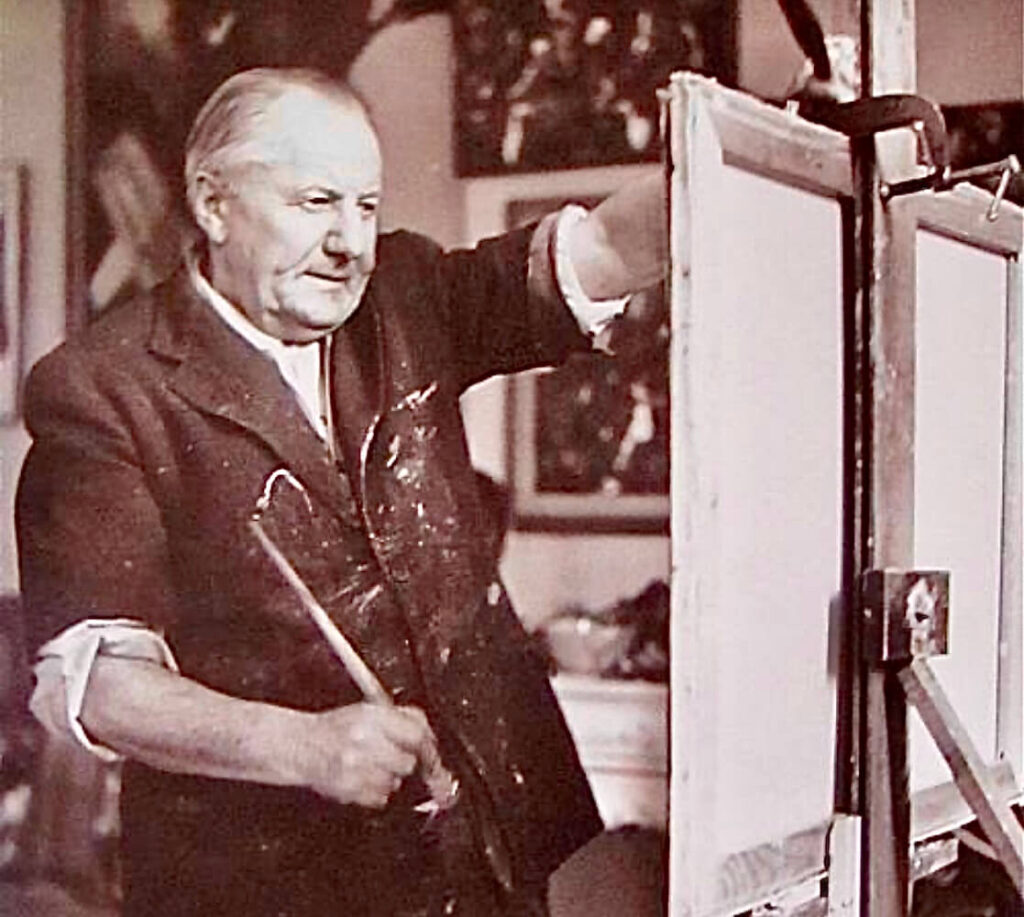Hans Hofmann
Hans Hofmann, one of the most influential figures in 20th-century American art, is celebrated for his vibrant use of color and dynamic compositions. His work and teaching significantly impacted the Abstract Expressionist movement and shaped the direction of modern art in the United States. This article explores Hofmann’s life, artistic journey, and highlights three of his most notable works.

Early Life and Education
Hans Hofmann was born on March 21, 1880, in Weißenburg, Germany. His early exposure to art came through his father, who was an amateur artist. Hofmann’s formal art education began in Munich, where he studied at the Moritz Heymann Art School. There, he immersed himself in the burgeoning avant-garde scene and was influenced by European modernists such as Wassily Kandinsky, Henri Matisse, and Pablo Picasso.
In 1904, Hofmann moved to Paris, where he became part of the vibrant artistic community that included Georges Braque, Juan Gris, and Robert Delaunay. During his time in Paris, Hofmann absorbed the principles of Cubism and Fauvism, which would later inform his own artistic practice.
Emigration to America and Teaching Career
With the outbreak of World War I, Hofmann returned to Germany, where he opened an art school in Munich. His school became a hub for modernist thought, attracting students from across Europe. However, as the political climate in Germany grew increasingly hostile to avant-garde art, Hofmann decided to emigrate to the United States in 1932.
In America, Hofmann quickly established himself as a leading art educator. He opened schools in New York City and Provincetown, Massachusetts, where he taught for over two decades. His teaching philosophy, which emphasized the principles of “push and pull” in painting, had a profound influence on a generation of American artists, including Lee Krasner, Helen Frankenthaler, and Joan Mitchell.
Artistic Evolution and Style
Hofmann’s own work evolved significantly over the course of his career. Initially influenced by Cubism and Fauvism, his early works featured bold colors and geometric forms. However, as he continued to develop his style, he began to explore more abstract compositions, focusing on the expressive potential of color and form.
Hofmann’s mature style is characterized by its dynamic use of color and spatial relationships. He believed that color could convey emotion and energy, and he used vibrant hues to create a sense of depth and movement in his paintings. His compositions often featured contrasting shapes and colors, creating a visual tension that he referred to as “push and pull.”
Notable Works
1. “The Golden Wall” (1961)
“The Golden Wall” is one of Hofmann’s most iconic paintings, exemplifying his mature style. The painting features a vibrant composition of geometric shapes and bold colors, with a dominant golden rectangle in the center. The use of contrasting colors and overlapping forms creates a sense of depth and movement, drawing the viewer’s eye across the canvas.
This work is a prime example of Hofmann’s “push and pull” technique, where the interplay of colors and shapes creates a dynamic visual tension. The painting’s radiant colors and complex composition reflect Hofmann’s belief in the expressive power of color and his ability to convey emotion through abstract forms.
2. “Pompeii” (1959)
“Pompeii” is another significant work that showcases Hofmann’s mastery of color and form. The painting features a series of bold, overlapping shapes in a vibrant palette of reds, blues, and yellows. The composition is both dynamic and balanced, with the interplay of colors creating a sense of rhythm and harmony.
This work reflects Hofmann’s fascination with the ancient city of Pompeii and his interest in capturing the energy and vitality of the past. The painting’s vibrant colors and dynamic composition evoke a sense of movement and excitement, making it one of Hofmann’s most engaging works.
3. “Cataclysm” (1945)
“Cataclysm” is a powerful and emotive painting that reflects the turbulence and uncertainty of the mid-20th century. The painting features a chaotic composition of jagged shapes and intense colors, creating a sense of upheaval and disarray. The use of dark, brooding tones and sharp contrasts conveys a sense of tension and anxiety.
This work was created during a particularly tumultuous period in history, reflecting Hofmann’s response to the political and social upheavals of the time. “Cataclysm” is a testament to Hofmann’s ability to capture the emotional intensity of the era through his use of abstract forms and expressive colors.
Techniques and Innovations
Hofmann’s approach to painting was marked by his innovative use of color and his exploration of spatial relationships. His “push and pull” technique, which emphasized the dynamic interplay of contrasting colors and shapes, was a key innovation that influenced the development of Abstract Expressionism. He believed that color could convey emotion and energy, and he used vibrant hues to create a sense of depth and movement in his paintings.
Hofmann often worked with a palette knife, layering thick, textured paint onto the canvas to create a sense of physicality and immediacy. His use of bold, contrasting colors and geometric forms created a dynamic visual tension that gave his paintings a sense of vitality and energy.
Personal Life and Influence
Hofmann’s personal life was marked by his dedication to his art and his commitment to teaching. He was a passionate educator, and his teachings had a profound influence on a generation of American artists. His emphasis on the expressive potential of color and form, as well as his “push and pull” technique, became foundational principles for many Abstract Expressionists.
Hofmann’s influence extended beyond his own students, impacting the broader art world as well. His work and teaching helped to establish Abstract Expressionism as a major movement in postwar American art, and his innovative use of color and form continues to inspire contemporary artists.
Recognition and Legacy
Hans Hofmann’s contributions to Abstract Expressionism and modern art are widely recognized and celebrated. His works are held in major museums and collections around the world, including the Museum of Modern Art in New York, the Whitney Museum of American Art, and the Smithsonian American Art Museum. His influence can be seen in the work of subsequent generations of artists who continue to explore the possibilities of abstraction and color.
In 1960, Hofmann was honored with a retrospective exhibition at the Museum of Modern Art in New York, cementing his reputation as one of the leading figures in American modernism. His legacy as both an artist and educator endures, reflecting his profound impact on the development of modern art.
Conclusion
Hans Hofmann was a pioneering figure in Abstract Expressionism, whose innovative use of color and form left a lasting impact on modern art. Through his most notable works, such as “The Golden Wall,” “Pompeii,” and “Cataclysm,” Hofmann explored the expressive potential of color and the dynamic interplay of shapes and forms, creating powerful and evocative compositions that continue to inspire and challenge viewers. His legacy as a master of abstract expression and a dedicated educator endures, leaving an indelible mark on the art world.



